We analysed the movements of three animals we observed on site : the mole, for which we only found traces of its burrow; the fox, for which we only saw his overall movement, and the great tit, which we could observe more. We choose to represent their movements in two different ways : the decompositions of their movements, with the different positions of their muscles, using elements of biomechanics, and the lines, the geometry, they trace in the space and the meaning of it.
Overall view of their movements : from line to stains
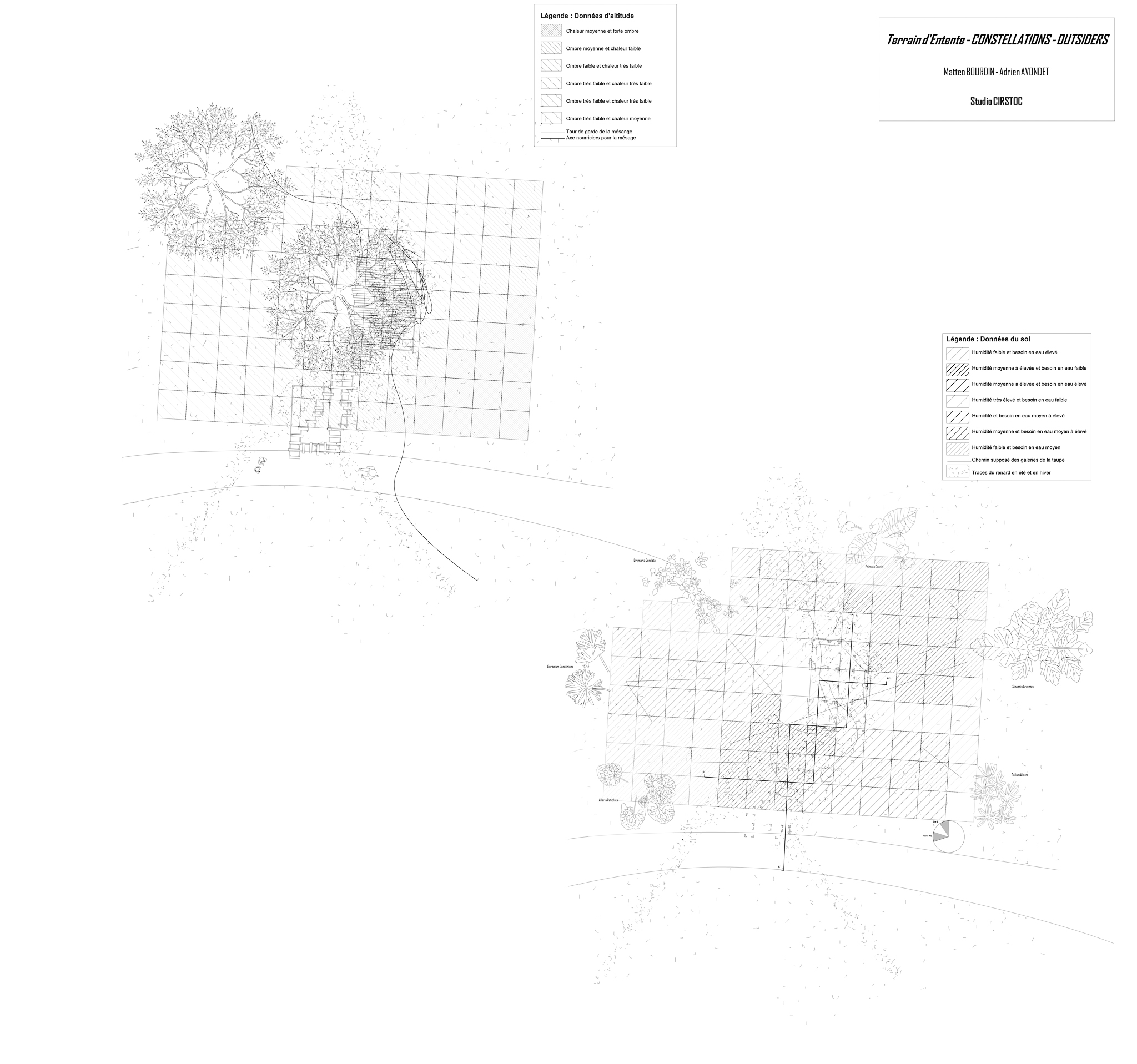
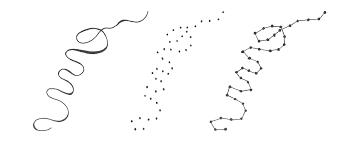
For the animals movements, we found different ways of showing these traces left by the animals, depending on the intentions left by theses animals. During our reflexion, we choose to see the line as the historical representation of a movement, as this gesture as a beginning and an end, so has to have the element we want to represent with a line. We choose to represent the movement of the bird with lines, because we observed its precise movements with a regularity and an parcours predefined that was linked to its guard duty.
For the fow, we focused on a more stainish way of representing it, because the trace left by the fox is more a zone of movement that it can travel from one side to another, with a precise space used, but not exactly always in the same order, depending on what it has to hunt.
The body and the space : biomechanics and lines
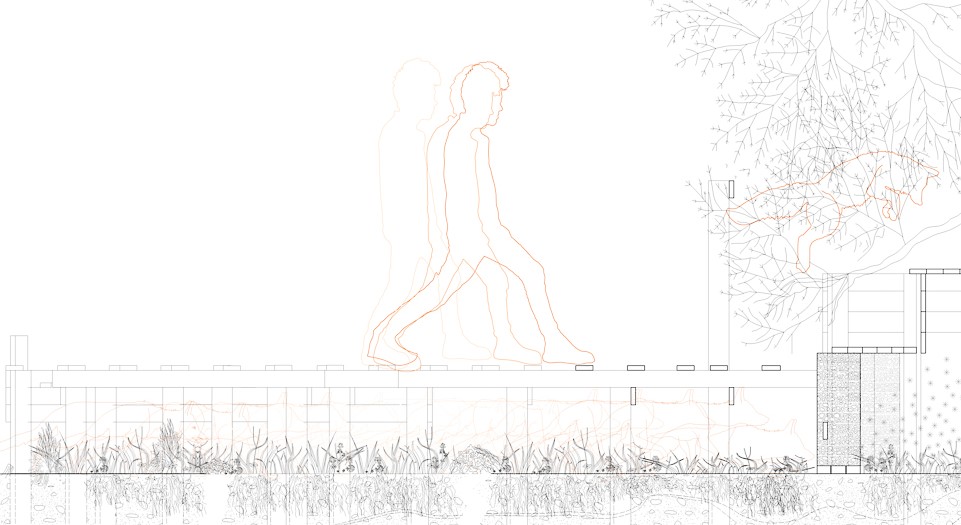
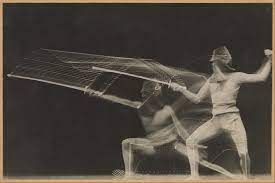
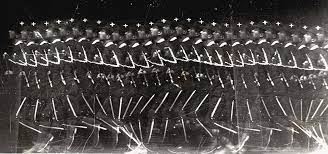
Another way to draw movements, that we have already experimented during Potentialities, is to decompose the movement into a cinematic overlaying drawing, that can show multiple positions and the common lines of the movements. With the overlaying of differents figures, we can sense bigger lines coming from it, and starting to be present, even if it’s not drawn.
Decomposing the movement was also the start of a biomechanical understanding of the animals body, how it was moving, and the ways the muscles were assemblied differently, and how it could impact movement.
Fiding a common grid for animals and humans
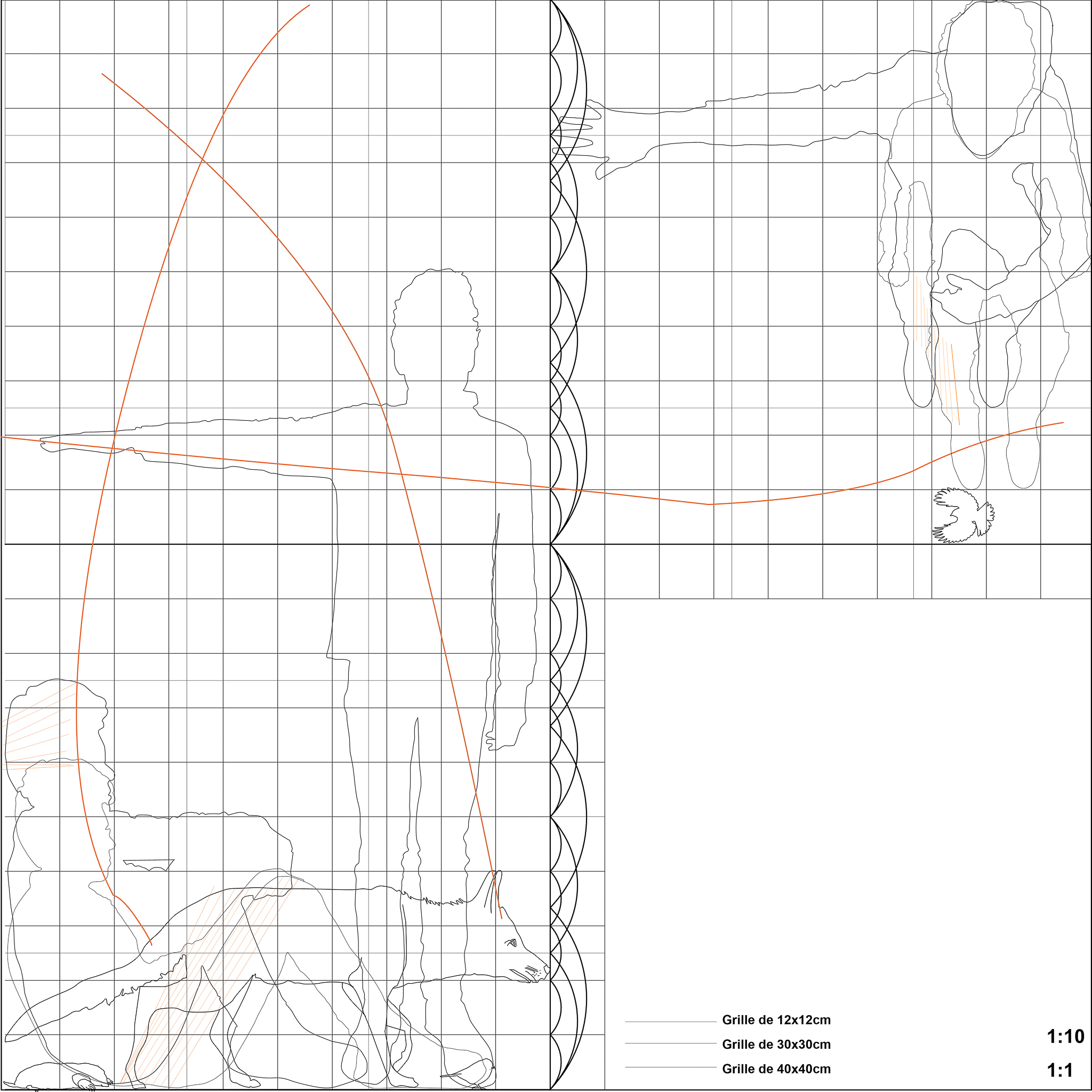
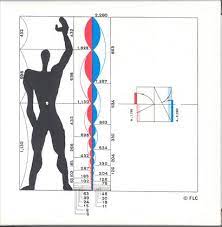
We used Le Corbusier’s modulor as a start of our reflexion about a common grid that could make sense of different bodies geometries, body proportions. One of Le Corbusier’s idea was to reconnect the common metric system (meters, etc.) derived from the French Revolution and the diverse old metric systems, derived from the body, its proportions and different parts of it : feets, yard (coudée), etc. The idea is to embodied a language in meters, with differents bodies.
Our start was to gather informations about these four bodies, Adrien’s one, the fox one, the great tit’s one and the mole, and see which common unit we could find to connect both of them. The Alice grid of 1m20 was fitting with our measurements so we decided to take it to create our structure.
The human body was fitting into a subdivision of the common matrice by 3 or 4, and the animals were fitting into division by 10. By overlaying the grid, we could see that some length were merging from both of the actors, and some weren’t. For these one, our reflexion was about, what little movement the body had to do in order to switch from one grid to another. By this movement, we can take conscience of our body and of how can we pass from one grid to another.
A line can show time, with the beginning of the gesture until the end of it. In that perspective, the grid was also a tool to draw these movement with lines, with a start (the human subgrid) and an end (the animal subgrid), and be beginnings of structural effects.
